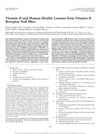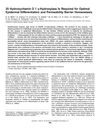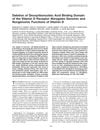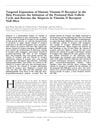A Humanized Mouse Model of Hereditary 1,25-Dihydroxyvitamin D–Resistant Rickets Without Alopecia
August 2014
in “
Endocrinology
”
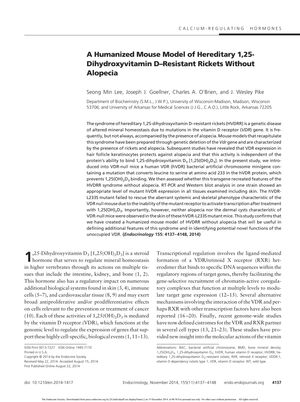
TLDR Researchers created a mouse model of a type of rickets that does not cause hair loss.
In the 2014 study, researchers developed a humanized mouse model of hereditary 1,25-dihydroxyvitamin D-resistant rickets (HVDRR) that does not exhibit alopecia, a common but not universal symptom of the disease. They achieved this by introducing a human VDR (hVDR) gene with a specific mutation (L233S) into VDR-null mice, which normally display both rickets and alopecia. The mutation in the hVDR gene prevented the binding of 1,25-dihydroxyvitamin D3, which is necessary for the activation of the VDR. While the mutant hVDR did not correct the systemic and skeletal abnormalities seen in VDR-null mice, it successfully prevented the development of alopecia and dermal cysts. This model allows for the study of HVDRR without the confounding factor of hair loss and can help identify new functions of the VDR that are independent of its role in vitamin D metabolism.
